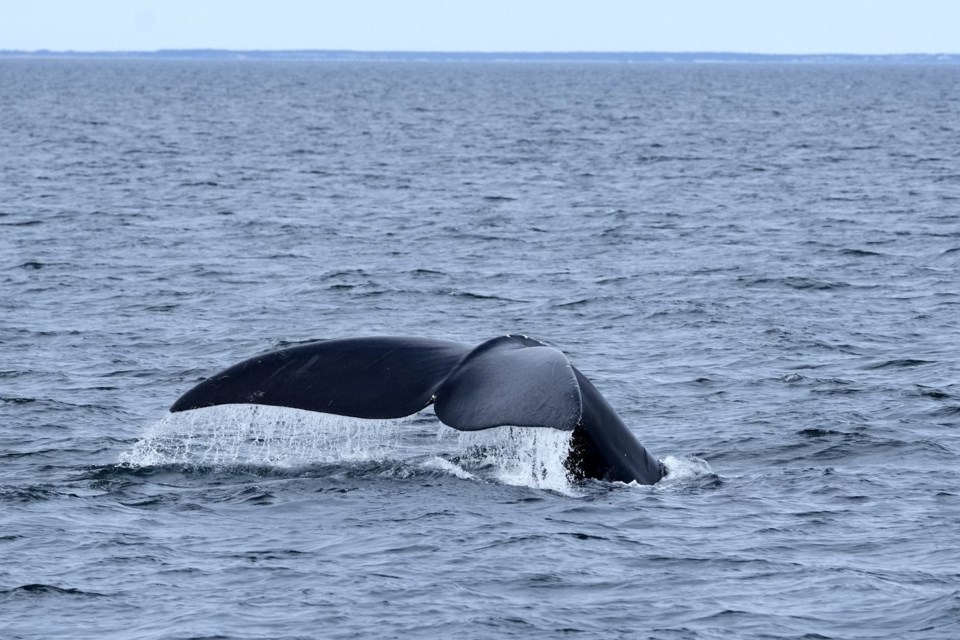MONTREAL — Whale rescue teams are preparing to make another attempt to disentangle a young right whale in the St. Lawrence Estuary, in an operation to save one of the last few hundred remaining animals of their kind in the ocean.
A spokesperson for Fisheries and Oceans saąúĽĘ´«Ă˝ says the department has been working for more than two weeks to disentangle the young animal, which was first spotted June 22 off the coast of New Brunswick and seen Monday off Portneuf-sur-Mer, Que.
"Despite the inclement weather conditions, several attempts to disentangle the right whale have already taken place and have made it possible to remove part of the rope," Kathryn Hallett wrote in an email.
She said Tuesday that the Campobello Whale Rescue Team — a group associated with the Canadian Whale Institute and composed of scientists and former fishers — is on its way to the area and will attempt to intervene in the coming days with the help of several other groups.
"All regional stakeholders are mobilized and co-ordinating in order to be ready to intervene in the coming days if weather conditions allow," Hallett wrote, adding that a satellite tag has been attached to the remaining ropes to allow researchers to track the animal.
The New England Aquarium has said the entangled animal is believed to be a female calf, approximately one-and-a-half years old, that was born in 2023 to a whale named "War."
Robert Michaud, the scientific director of the Group for Research and Education on Marine Mammals (GREMM), said that when it comes to the North Atlantic right whale, "every animal is very important."
"Right now we estimate the population at 360," he said. "That's all the species, all that's left." He said there is special concern over the lack of reproductive-age females, and the fact that those who give birth are doing so less frequently.
Michaud said that while entanglements aren't always fatal, they have long-term consequences for the whales, and are especially dangerous for younger ones, who aren't as strong as their parents. He said whales who have been entangled may die earlier and often reproduce less often.
"Physical condition declines following these entanglements because they have had to expend a lot of energy to extricate themselves or simply survive," he said.
An estimated 85 per cent of right whales have been entangled in fishing gear at least once, and Michaud said that includes five of the entangled Quebec whale's siblings.
Disentangling a whale can be a dangerous operation, conducted in the open ocean with knives and grappling hooks, often in difficult weather. A successful attempt, Michaud said, requires specialized teams who have knowledge of both whale behaviour and fishing gear.
However, he said the effort is worthwhile, because the right whales still have a "real chance" at survival. He said they live a long time, are quite resilient and their deaths are largely due to human causes such as entanglements and boat strikes — making many deaths preventable.
He said conservation strategies in recent years have included lowering vessel speeds near the whales, temporarily closing areas to fishing and experimenting with ropeless fishing gear.
"Every whale that survives gives the population a chance to reestablish itself," he said. "So it's really worth it to be creative and innovative to save these animals, because they can survive."
This report by The Canadian Press was first published July 9, 2024.
Morgan Lowrie, The Canadian Press



